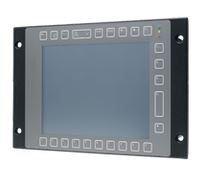One of the most unique industrial automation applications that I have encountered is railway rolling stock. Harsh environmental variances and the fact that this is a moving application contribute to the complexity of this type of application. Without a doubt, the EN50155 standard is vital to all railway applications, since it addresses the application requirements seen in all rolling stock equipment. Most of the EN50155 standard revolves around the power supplies utilized within a railcar, although the hardware integrated must also adhere to the same standard since temperature, shock, vibration, input voltage, performance and reliability are crucial elements to any railcar application, as well.
Relying on my personal experiences with railcar applications, I will address what I feel are the 5 most important EN50155 compliance requirements. Be aware that I don’t cover everything, since it’s a long list, but this will give you can idea of the most crucial factors to consider if you are involved in a railway project.
- Ambient Temperature: Under EN50155, any solution implemented (Human Machine Interface, Communications, I/O, etc.) must adhere to temperatures of -40°C to +85°C for at least 10 minutes during start-up. Power supplies in these units must work at 85% or better efficiency, and have a wide range of voltage input and load variance. Temperature management is also essential since certain areas of the world see varying temperature extremes throughout the day.
- Shock & Vibration: This requirement refers to the tolerance levels allowed for power supplies that are body-mounted, bogie-mounted and axle-mounted. The specifications will vary but can range from up to 30g for 5 hours with 1km/s shock for axle-mounted to less than 1g vibration, 5g shock for power supplies body-mounted in the railcar. The ability to resist resonance and be mechanically sound are the most significant aspects of this requirement.
- Power Supply Input Voltage: EN50155 requires minimum voltages of 24, 48, 72, 96 and 110V DC. Power supplies utilized for railway applications must operate within 0.6 and 1.4 nominal with no deviation. This is to ensure that every railcar can functionally operate. It is also advantageous to implement an input capacitor, which will help to level out any ripple voltage, creating more DC input consistency.
- Performance & Reliability: Quality and safety are two large factors to think about in terms of EN50155 certification. They take into account fault protection, wiring, layout, connectors and components utilized for the power supply in each unit.
- Approval Testing: Required type testing includes visual inspection, performance, low temperature operation, dry heat, successful operation over the full input voltage range, surge, ESD, transient, electrical insulation, vibration, shock and bump. An EMC (Electromagnetic Compatibility) test is usually mandatory with additional requirements for internal and end-user testing approval before First Article Inspection Approval.
Now that you’ve had time to digest these EN50155 certification requirements, please feel free to contact me if you have any questions about the requirements or the hardware utilized to achieve them. Comment below or reach out to me at 800-830-9523, ext. 126 or via email at jeremy.miller@l-tron.com.
